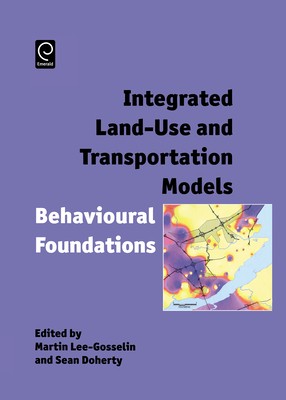
- Išsiųsime per 12–18 d.d.
- Leidėjas: Elsevier Science Ltd
- ISBN-10: 0080446698
- ISBN-13: 9780080446691
- Formatas: 17.1 x 25 x 1.8 cm, kieti viršeliai
- Kalba: Anglų
- Extra -15 % nuolaida šiai knygai su kodu: ENG15
Integrated Land-Use and Transportation Models (el. knyga) (skaityta knyga) | knygos.lt
Atsiliepimai
Aprašymas
Tools are developing rapidly to aid public agencies and consultants with the management of land-use and transportation. Ever more powerful computers promise new generations of simulation models that allow novel investment strategies and public policies to be "tried on for size" before they are introduced. But for these models to reach their full potential, they must represent human behaviour in a realistic way. This book examines the behavioural foundations, often simplistic, that have limited land-use and transportation models in the past, and recommends alternative assumptions, frameworks and methods. At the heart of these are ways to measure and represent the processes of decision-making that lead to the organisation of human activities in time and space. All the main urban decision-makers are involved, including individuals, households, property developers, owners of shops and leisure facilities, employers, and public officials. The focus ranges from daily decisions of households concerning what to do, where and when to do it, and by what travel mode, to longer term decisions concerning residential choice, vehicle holdings or land consumption by housing and business entities. Collectively, these intentional micro-level behaviours culminate in aggregate flows of traffic and urban growth that may be unintended and contrary to public policy. The book is an essential guide to these behavioural foundations for anyone evaluating the environmental sustainability, healthiness and equitability of access to activities and services in city regions. This book was a product of the PROCESSUS international network research programme, funded principally by the Social Sciences and Humanities Research Council of Canada (SSHRC), the Canadian Network of Centres of Excellence in geomatics (GEOIDE), and the Quebec Ministry of Transport.
EXTRA 15 % nuolaida su kodu: ENG15
Akcija baigiasi už 2d.17:40:13
Nuolaidos kodas galioja perkant nuo 10 €. Nuolaidos nesumuojamos.

- Leidėjas: Elsevier Science Ltd
- ISBN-10: 0080446698
- ISBN-13: 9780080446691
- Formatas: 17.1 x 25 x 1.8 cm, kieti viršeliai
- Kalba: Anglų Anglų
Tools are developing rapidly to aid public agencies and consultants with the management of land-use and transportation. Ever more powerful computers promise new generations of simulation models that allow novel investment strategies and public policies to be "tried on for size" before they are introduced. But for these models to reach their full potential, they must represent human behaviour in a realistic way. This book examines the behavioural foundations, often simplistic, that have limited land-use and transportation models in the past, and recommends alternative assumptions, frameworks and methods. At the heart of these are ways to measure and represent the processes of decision-making that lead to the organisation of human activities in time and space. All the main urban decision-makers are involved, including individuals, households, property developers, owners of shops and leisure facilities, employers, and public officials. The focus ranges from daily decisions of households concerning what to do, where and when to do it, and by what travel mode, to longer term decisions concerning residential choice, vehicle holdings or land consumption by housing and business entities. Collectively, these intentional micro-level behaviours culminate in aggregate flows of traffic and urban growth that may be unintended and contrary to public policy. The book is an essential guide to these behavioural foundations for anyone evaluating the environmental sustainability, healthiness and equitability of access to activities and services in city regions. This book was a product of the PROCESSUS international network research programme, funded principally by the Social Sciences and Humanities Research Council of Canada (SSHRC), the Canadian Network of Centres of Excellence in geomatics (GEOIDE), and the Quebec Ministry of Transport.


Atsiliepimai